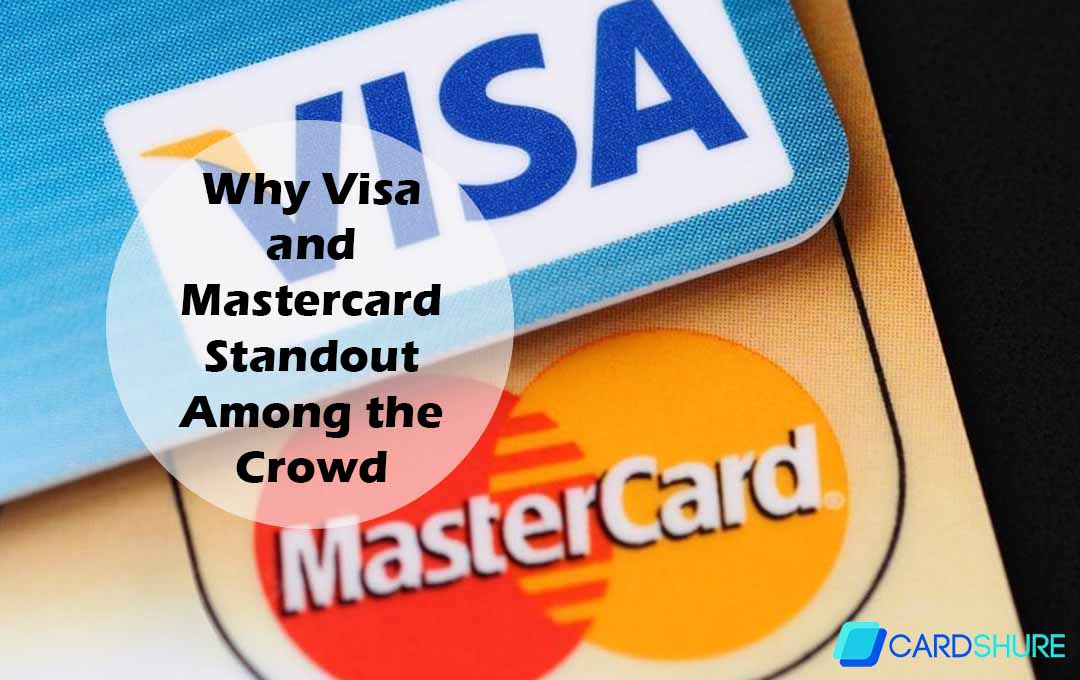At the moment, the electronic payment industry has been taken over by four companies. They include Visa, Mastercard, American Express, and Discover. These companies are responsible for handling the majority of the world’s card payments. Visa and Mastercard happen to present some distinct offerings, as neither company is involved with extending credit or issuing cards.

This means that all the Visa and Mastercard payment cards would be issued via some type of co-branded relationship. While the two companies do not extend credit or issue cards, they do partner to offer the broadest array of products that encompasses credit, debit, and prepaid card options.
Visa vs Mastercard
As stated by the Federal Reserve’s 2020 Diary of Consumer Payment Choice survey, about 42% of Americans preferred to pay bills via a debit card, while 29% used a credit card, meaning that 71% have at least one or the other. Tons of people have a number of them, seeking to take advantage of all the reward cash-back opportunities, and some promotional benefits that the issuer is offering.
Understanding Visa and Mastercard
Visa and Mastercard happen to be the only network payment processors that are involved in all three areas of the payment market. Working exclusively as network processors, these two companies carry a unique edge, but they tend to work differently.
Mastercard and Vis are both traded publicly. Visa commands about a $497.5 billion market capitalization, while the Mastercard symbol follows closely behind at $359.8 billion (market cap as of May 18, 2021). As none of the two companies extend credit or issue cards via a banking division, both of them have a broad portfolio of co-branded offerings.
The business models of the two companies are quite similar. Visa and Mastercard do not issue cards directly to the public but via partner member financial institutions like banks and credit unions. The member financial institution would then issue cards for individuals and businesses, either directly or in partnership with airlines, hotels, or even retail brands.
Setting Terms and Conditions
The issuing financial institution gets to set the Payment card’s terms and conditions which include fees, rewards, and other features. (Retailers usually work with a third-party financial institution.) when it comes to credit cards, interest rate structuring, and full development of rewards programs.
The Card issuer can also offer other perks, like identity theft and fraud protection, car rental insurance, and business purchase discounts. While differences in interest rates, credit limits, reward programs, and perks get controlled by the issuing financial institution, Visa and Mastercard compete for the co-branded relationship and take part in drafting out the card terms.
Which is Better?
If you are trying to choose between a Visa Credit card or a Mastercard, the reality is that either credit card network is likely a better choice. The two cards are widely accepted in the United States/globally and have useful additional benefits. A card from either credit card network would be accepted pretty much everywhere you choose to shop.
The credit card network you choose to go with ultimately matters less compared to the specific credit card issuer and the individual credit card you decide on. This is mainly because the benefits offered by Mastercard and Visa are both pretty similar. While nice additional perks, Visa and Mastercard benefits are generally less important compared to more pertinent details like a particular credit card’s rewards structure or interest rate.
Major Difference
The major difference between Visa and Mastercard credit cards is relatively small and it has to do with which specific banks and lenders they choose to partner with. The two networks also possess different credit card tiers that come with different benefits. Visa has three major tiers Visa Traditional; Visa Signature and Visa Infinite and Master has four which are Standard & Gold Mastercard, Titanium & Platinum Mastercard, World Mastercard, and World Elite Mastercard.
Visa Card Overview
As of 2020, Visa generated $21.8 billion in net revenue with a payment volume of $8.8 trillion. The core products include credit, debit, and prepaid cards as well as business solutions and global ATM services. The reportable business segments of the company include:
- Service ($9.8 billion in 2020)
- Data Processing ($11.0 billion in 2020)
- International Transactions ($6.3 billion in 2020)
- Other ($1.4 billion in 2020)
Both Visa and Mastercard earn more when it comes to revenue from service and data processing fees, but the two companies characterize these fees differently and they have their own fee structures. Service fees are charged to the issuer and are based on card volume.
Mastercard Overview
As of 2020, Mastercard generated a total net revenue of 15.3 billion, with a payment volume of $6.3 trillion. Mastercard’s core products include consumer credit, consumer debit, prepaid cards, and commercial product businesses. Mastercard has one reportable business segment, known as Payment solutions, that is broken out by geographies across the United States and other countries.
